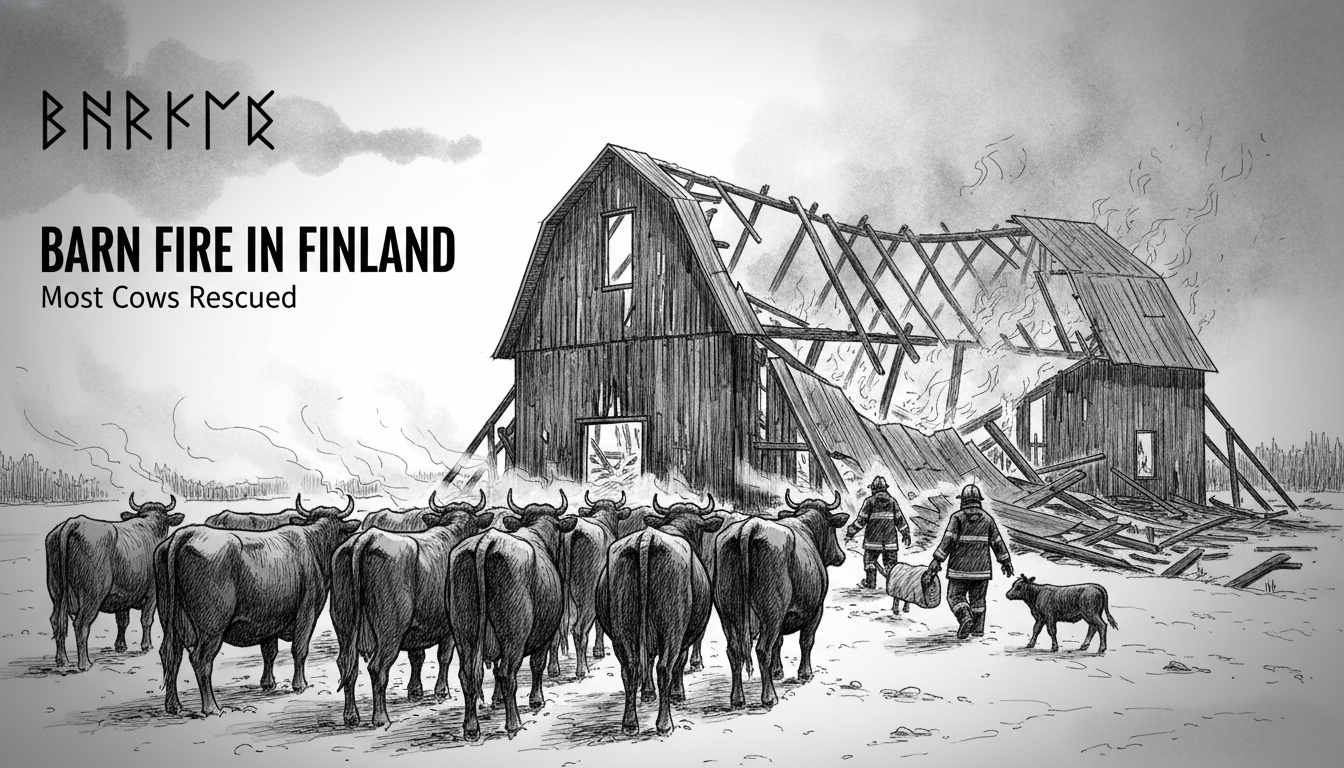Firefighters rescued 19 out of 20 cows from a burning barn in western Finland on Friday evening. The blaze completely destroyed a 700-square-meter barn and machinery shelter in Alavus, a municipality in South Ostrobothnia region.
The fire started before 8 PM and rapidly consumed the agricultural building. Emergency responders managed to prevent the flames from spreading to nearby structures. No human injuries were reported during the incident.
Local rescue services confirmed the successful animal rescue operation. They worked quickly to evacuate the livestock from the burning structure. The rapid response likely saved most of the animals from harm.
This incident highlights the ongoing challenge of barn fires in Nordic agricultural communities. Finland experiences several such fires each year despite strict safety regulations. Farmers often face devastating losses when these structures burn.
Agricultural buildings present unique fire risks due to stored equipment and animal housing. Electrical systems and heating equipment frequently contribute to these blazes. Proper maintenance and fire prevention measures remain crucial for farm safety.
The South Ostrobothnia region represents one of Finland's most important agricultural areas. Dairy farming forms a significant part of the local economy. Protecting livestock and farm infrastructure directly affects regional food production.
Recent years have seen increased focus on farm fire safety across Nordic countries. Insurance companies now often require specific prevention measures. Many farmers have installed smoke detectors and fire extinguishing systems in their barns.
What makes barn fires particularly challenging for firefighters? These structures often contain flammable materials like hay and bedding. The open design can allow fires to spread rapidly once ignited. Animal rescue operations also complicate firefighting efforts.
The complete destruction of this barn represents a substantial financial loss for the farm owner. Rebuilding costs for agricultural structures can exceed hundreds of thousands of euros. Many farmers carry specialized insurance for such events.
Local authorities will investigate the exact cause of the fire in coming days. Electrical faults often trigger agricultural building fires during colder months. Heating systems and lighting equipment require regular inspection to prevent such incidents.
This successful animal rescue operation demonstrates improved emergency response coordination in rural Finland. Fire services have developed specialized procedures for livestock emergencies. Training now includes techniques for safely evacuating large animals from dangerous situations.

